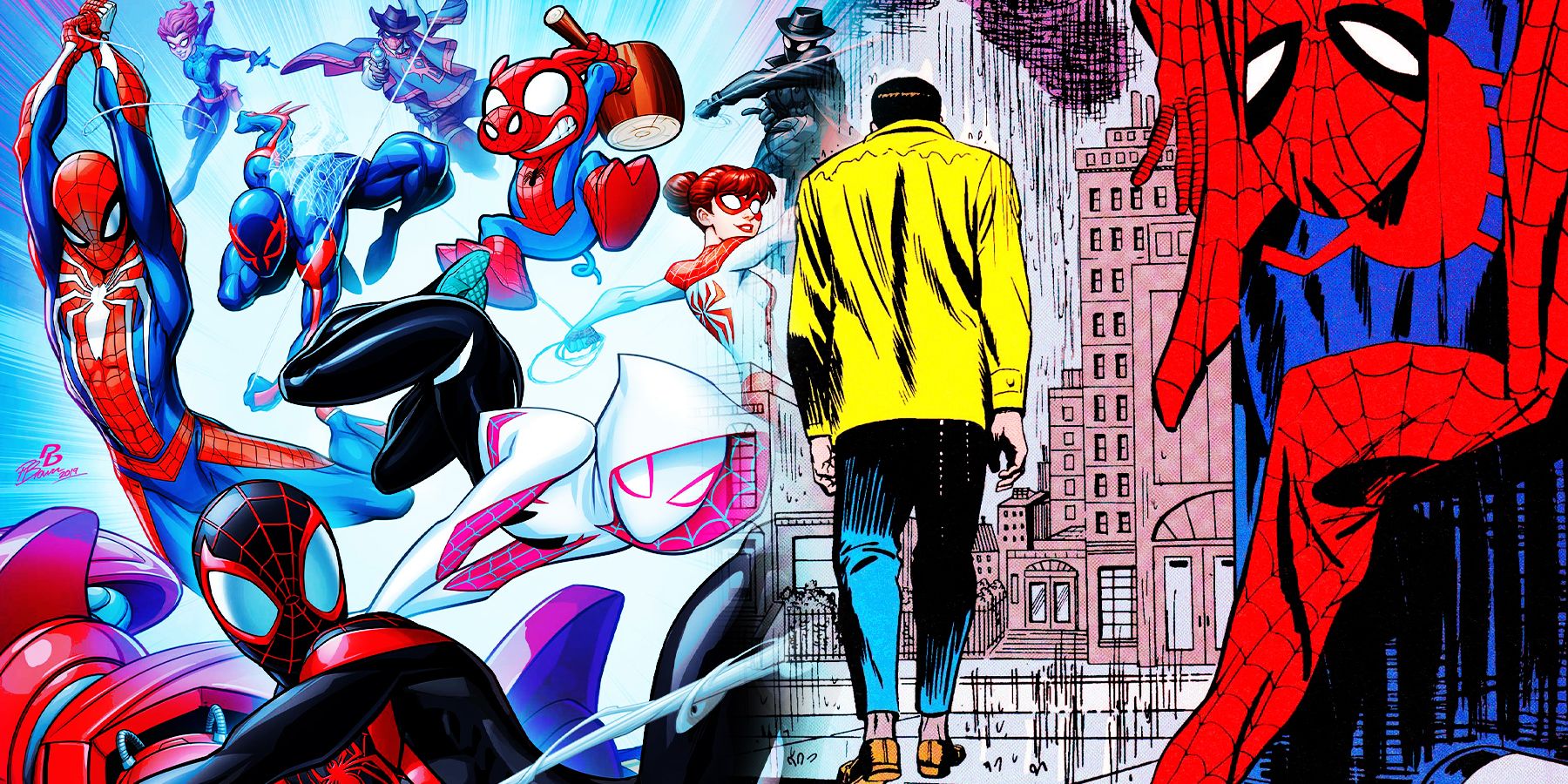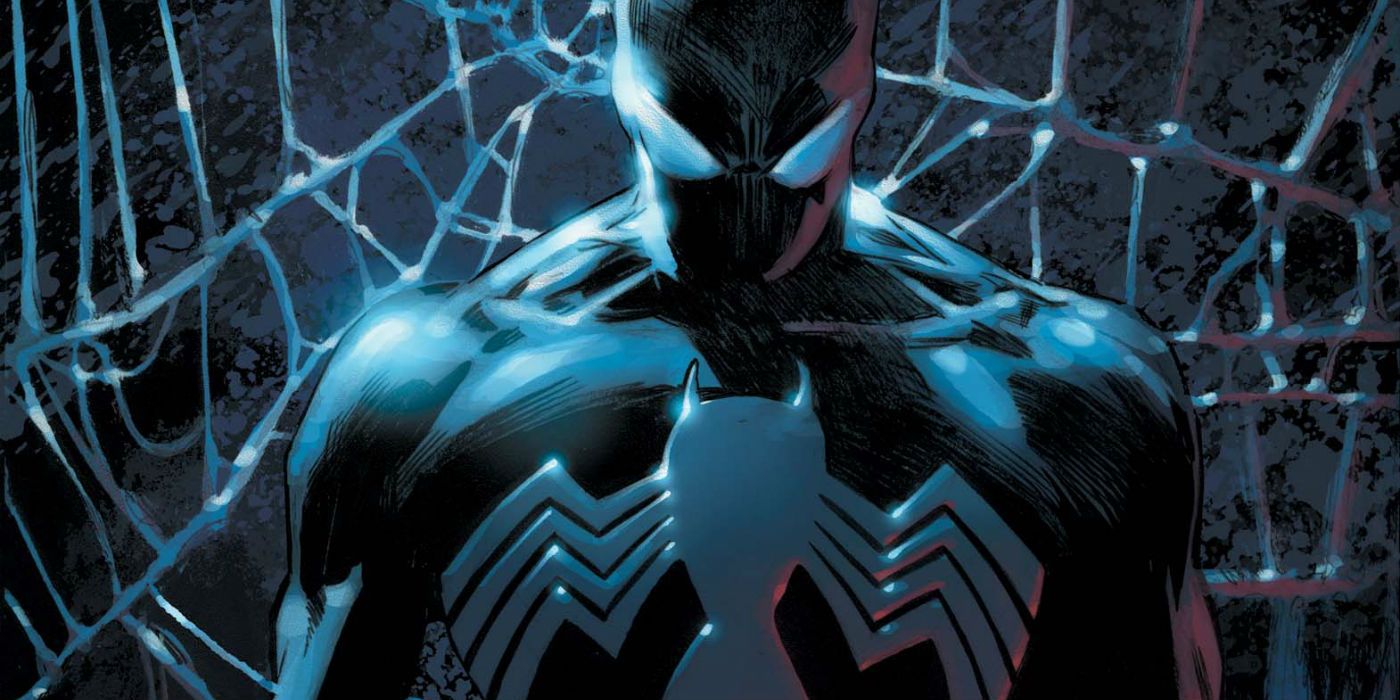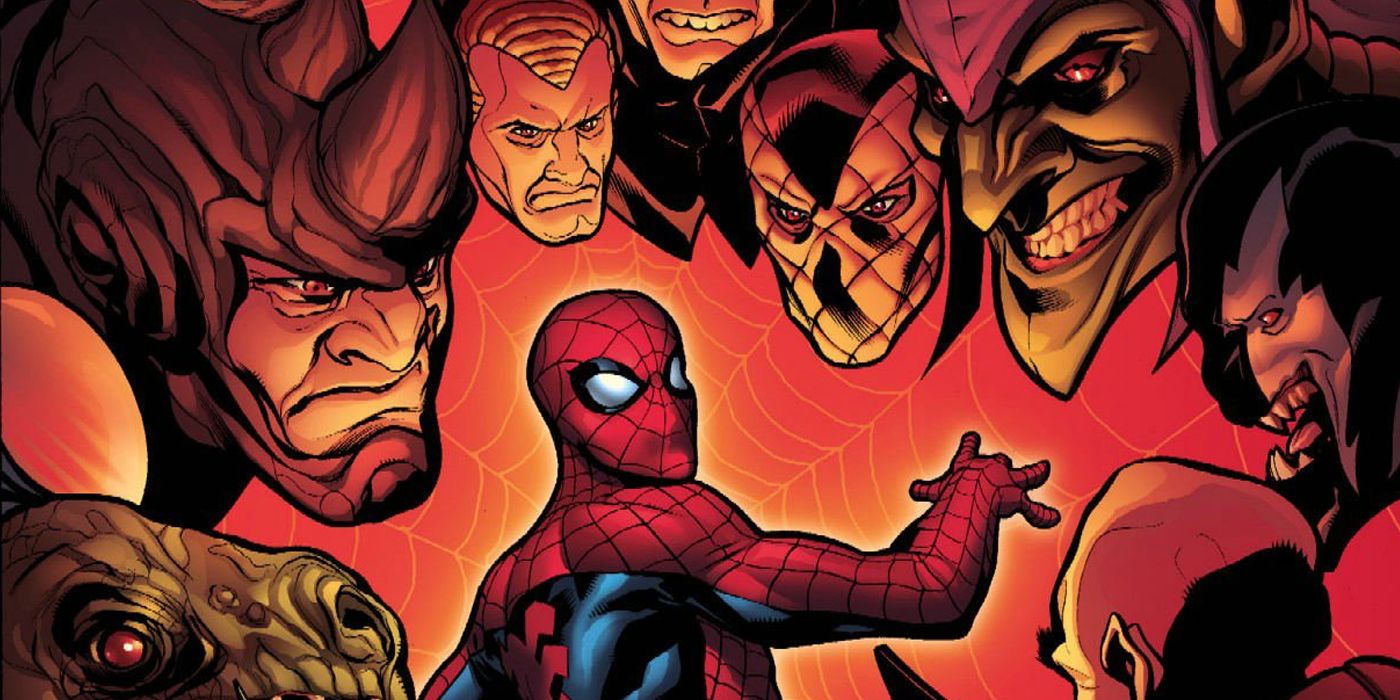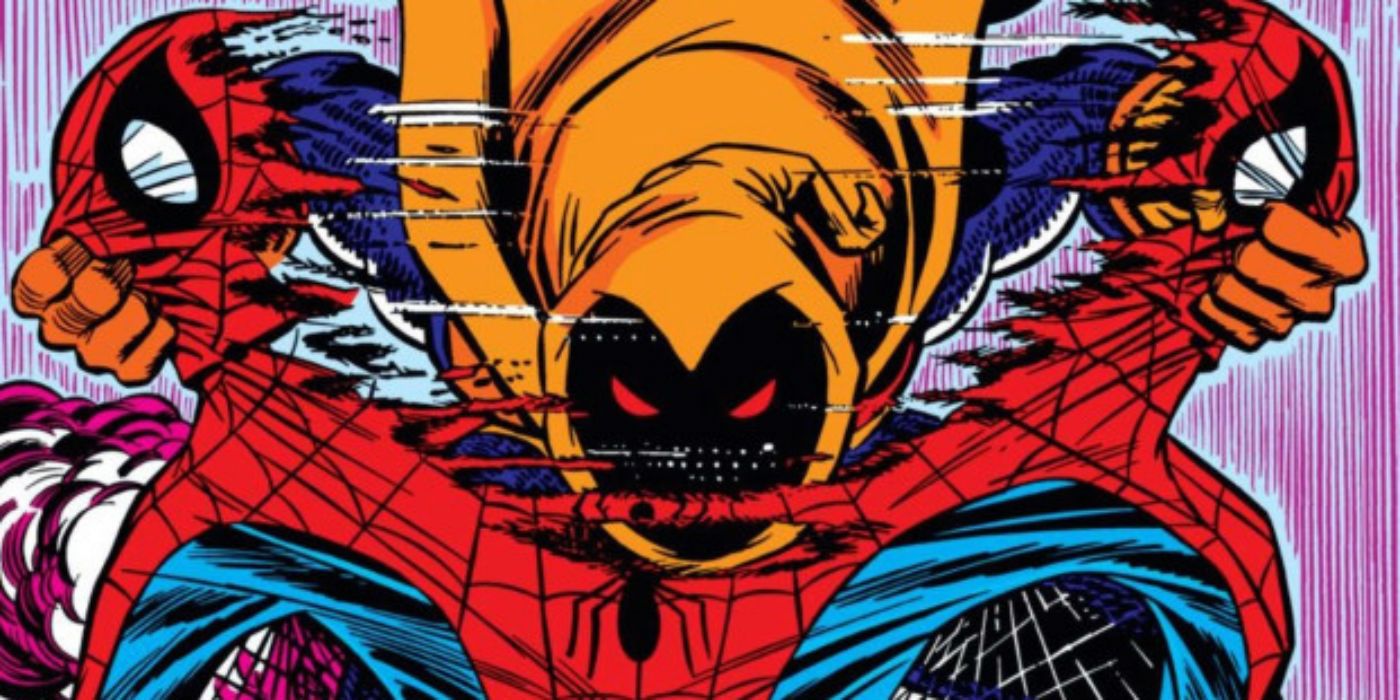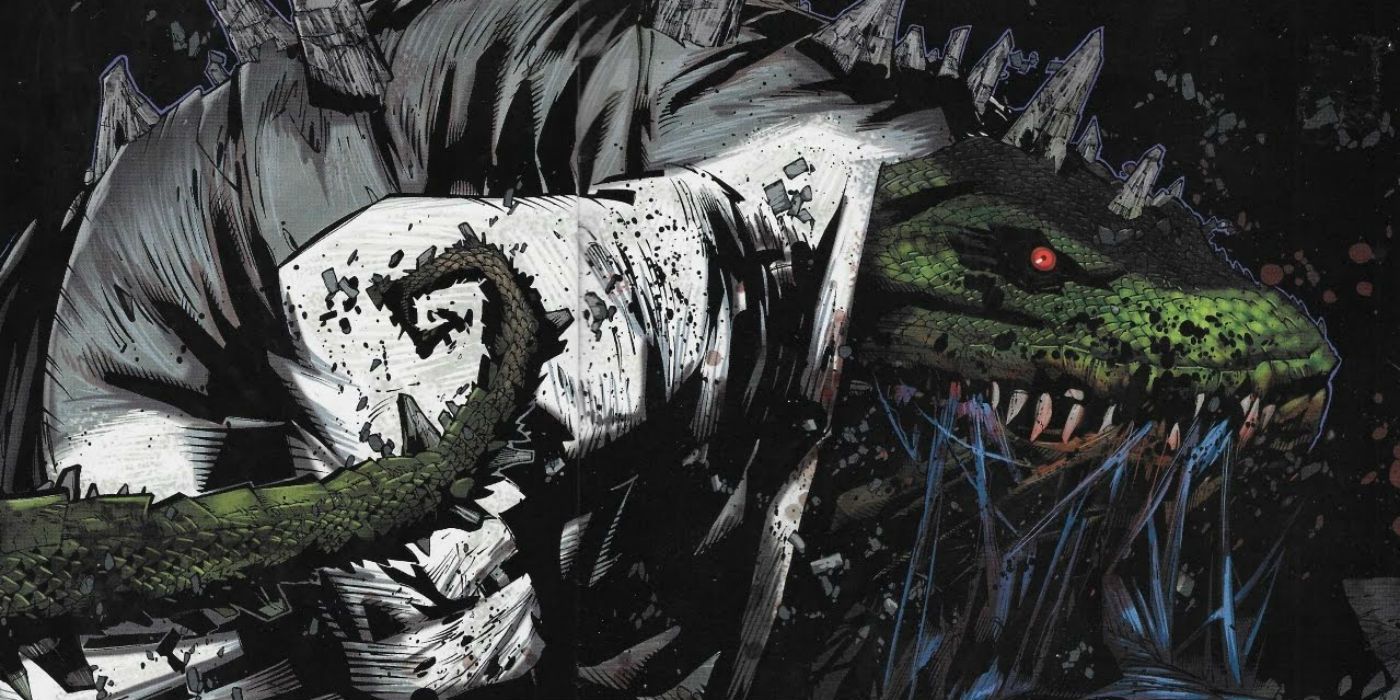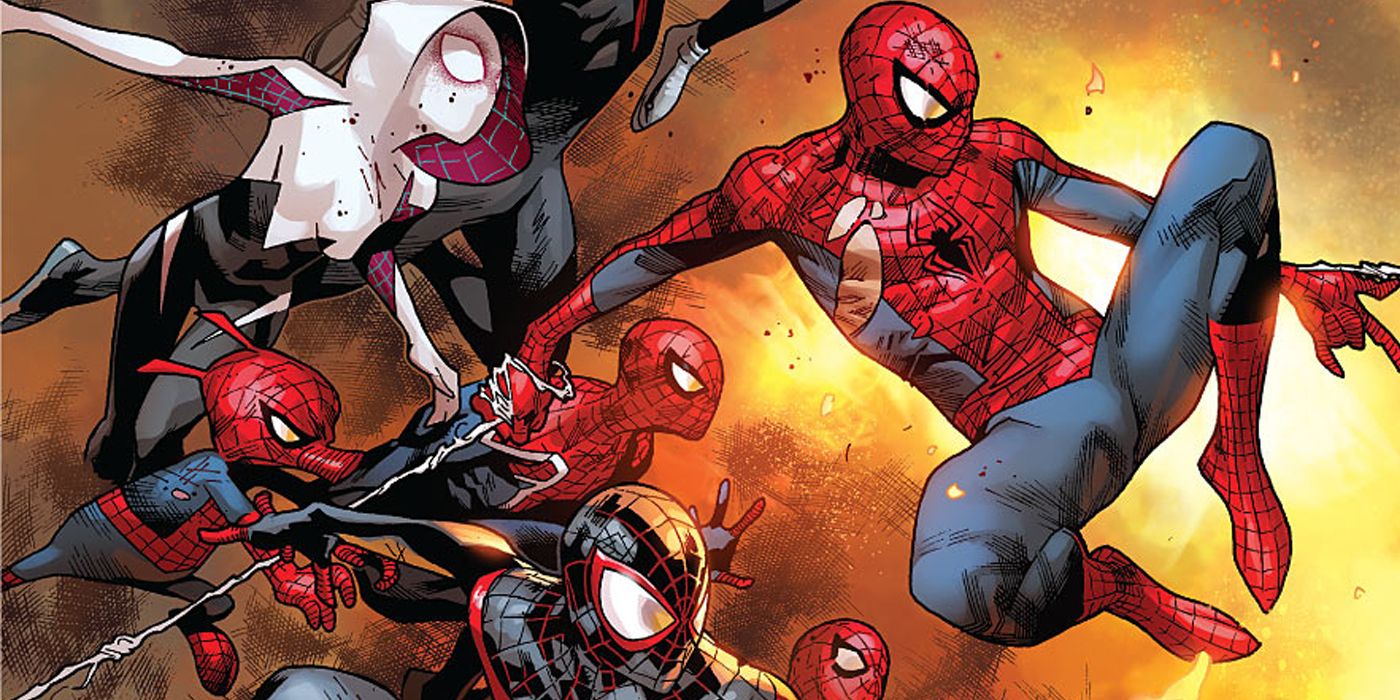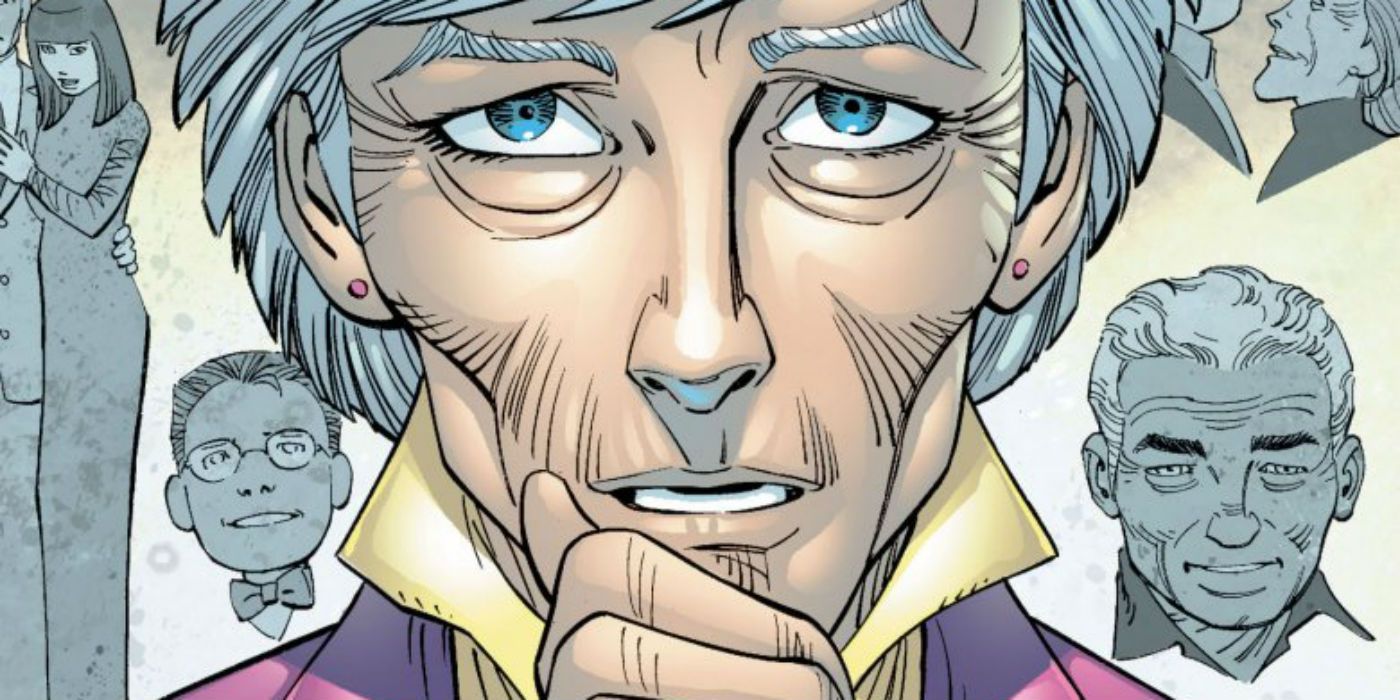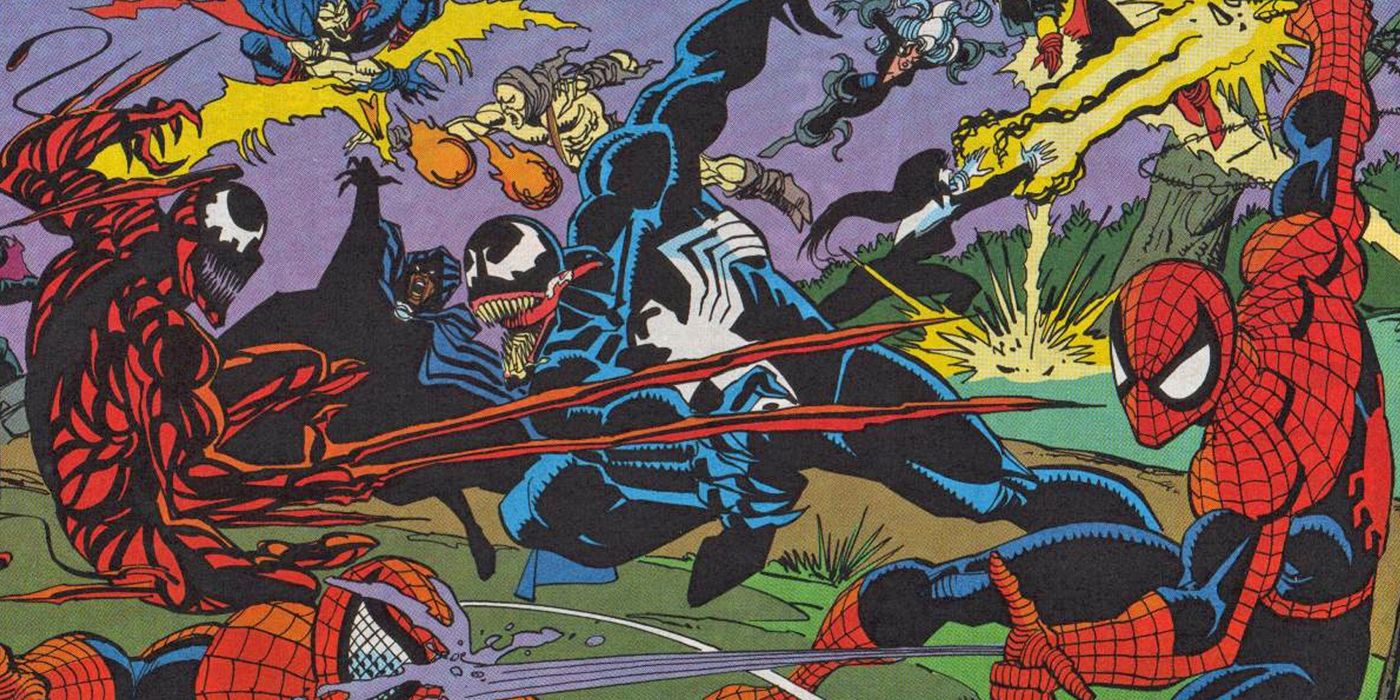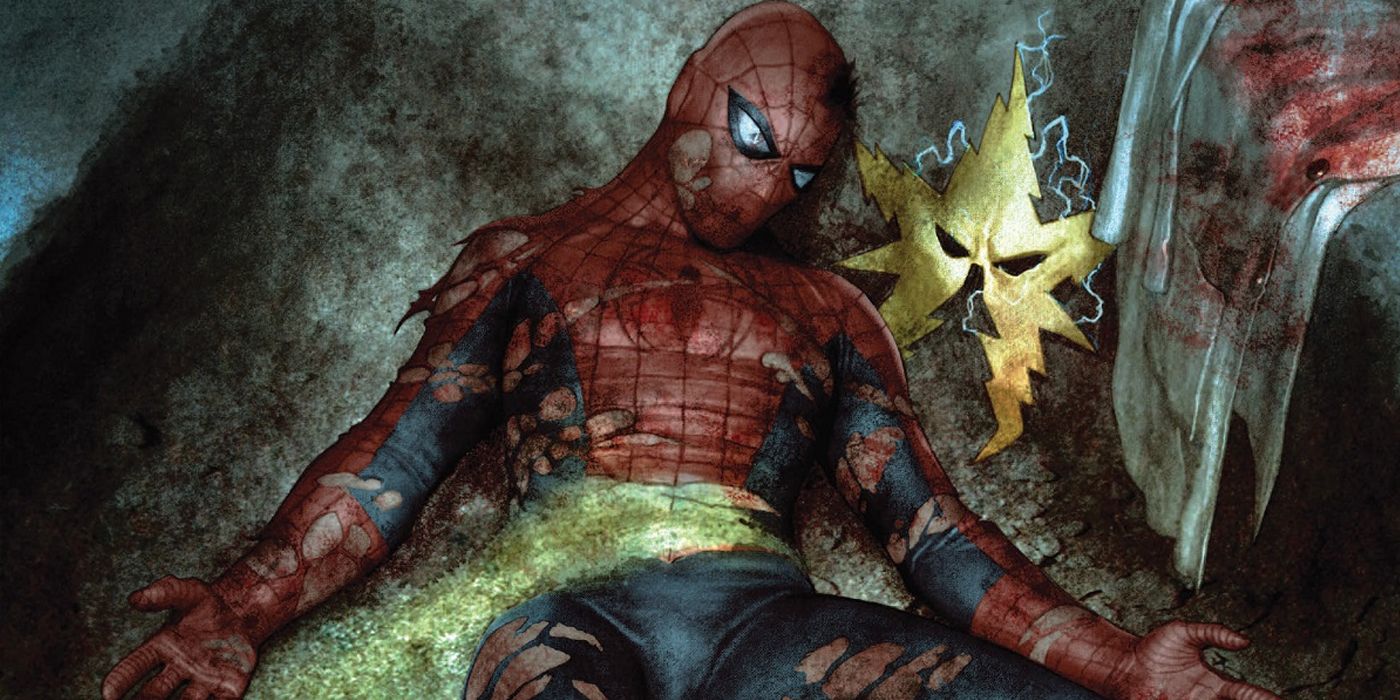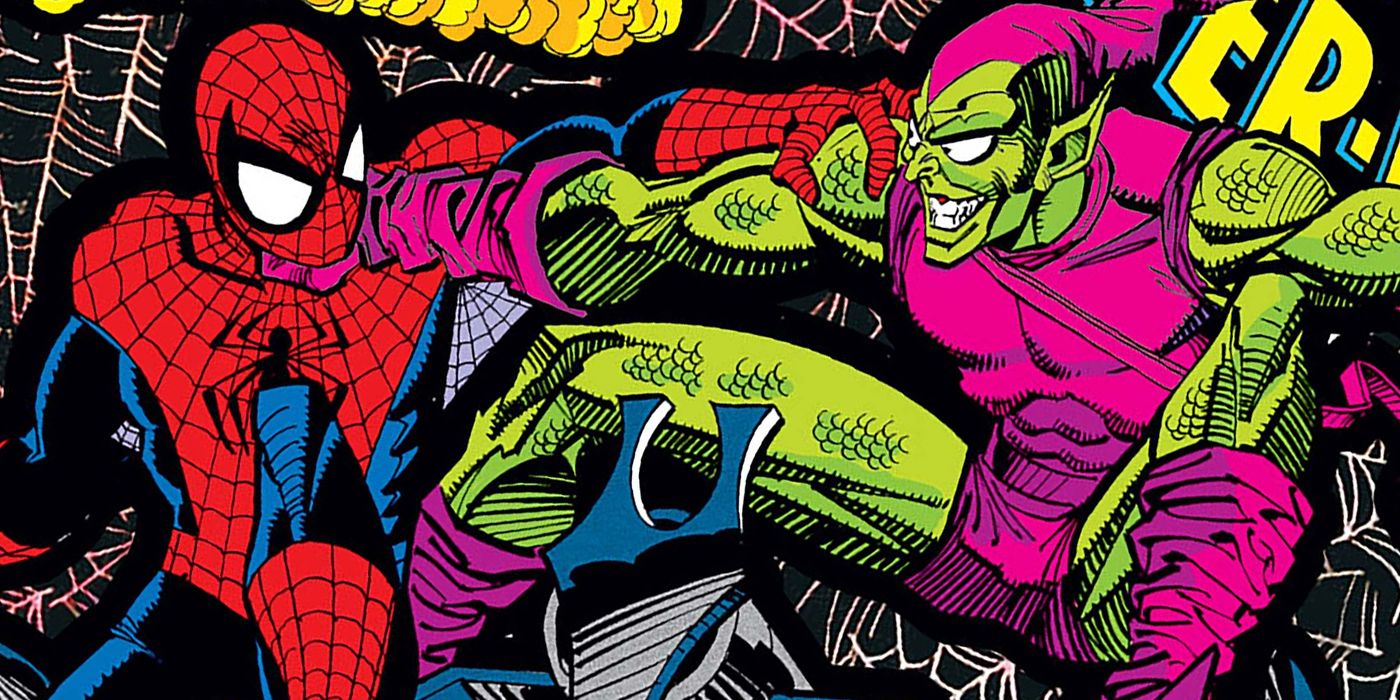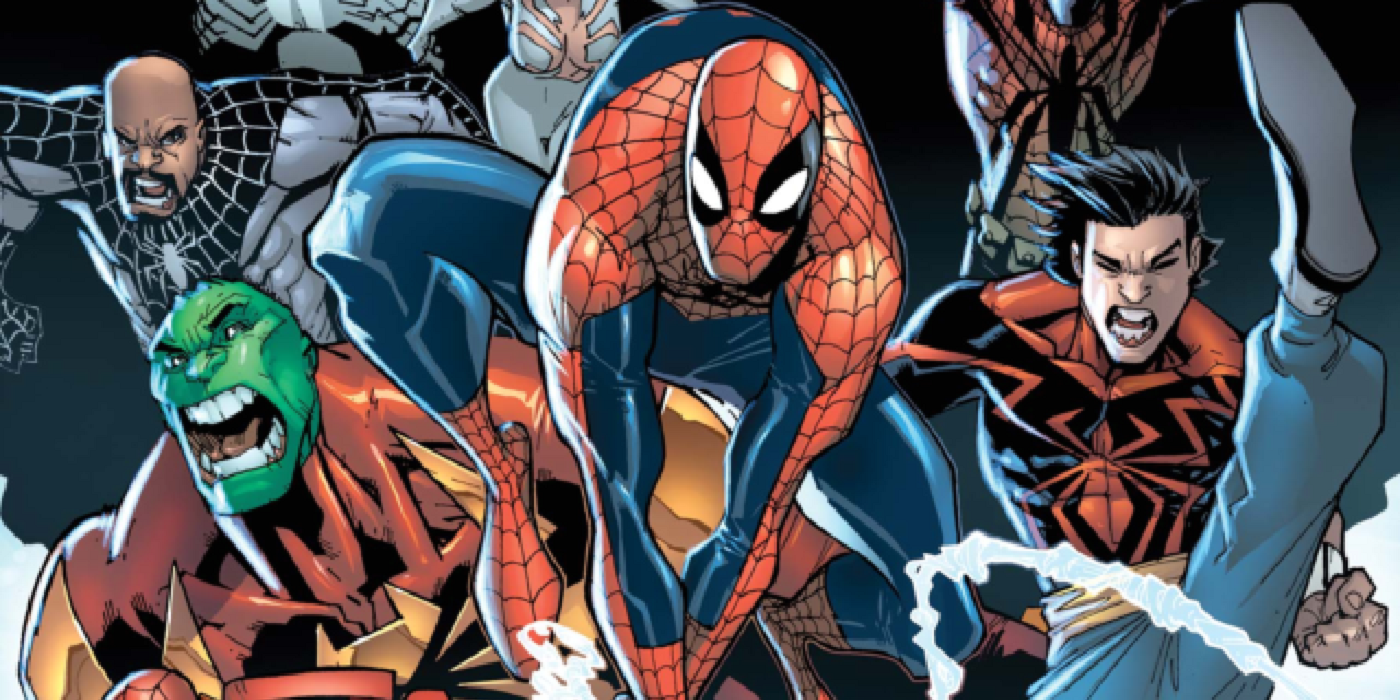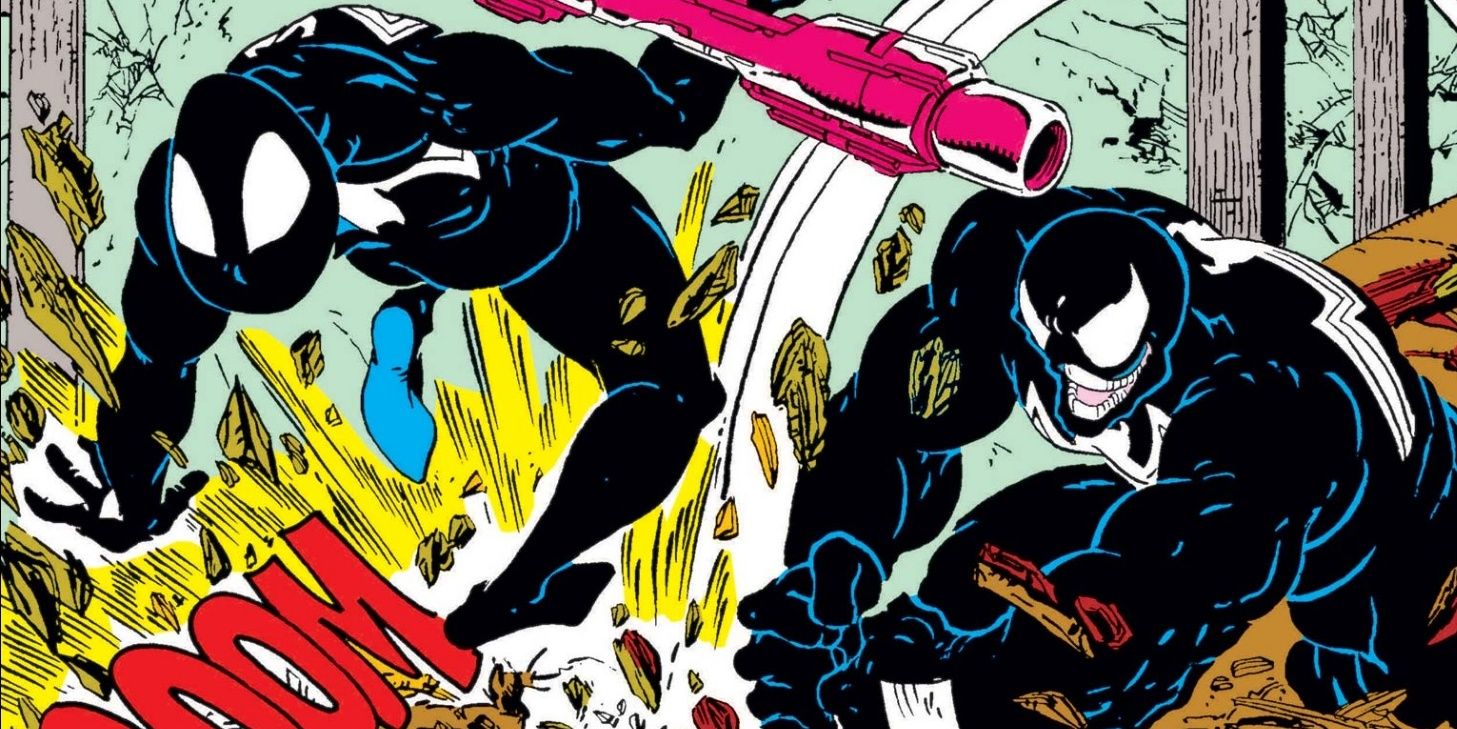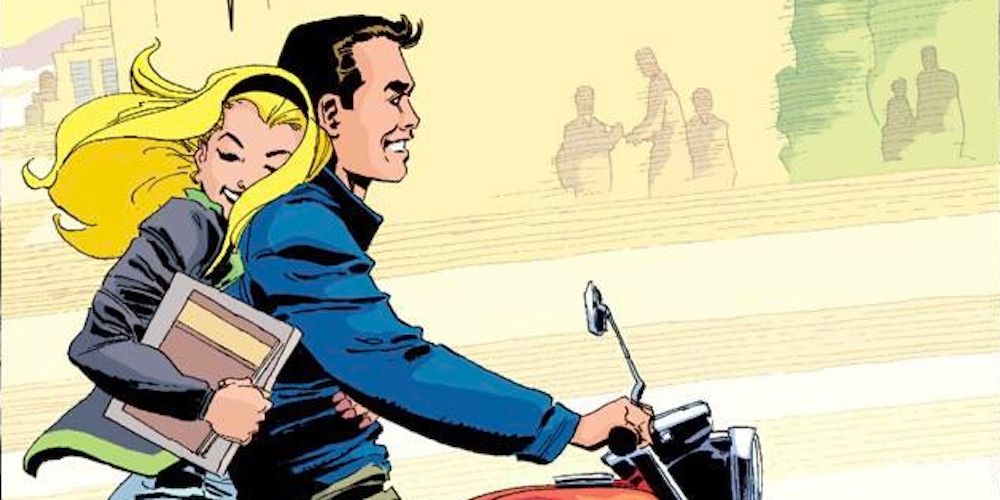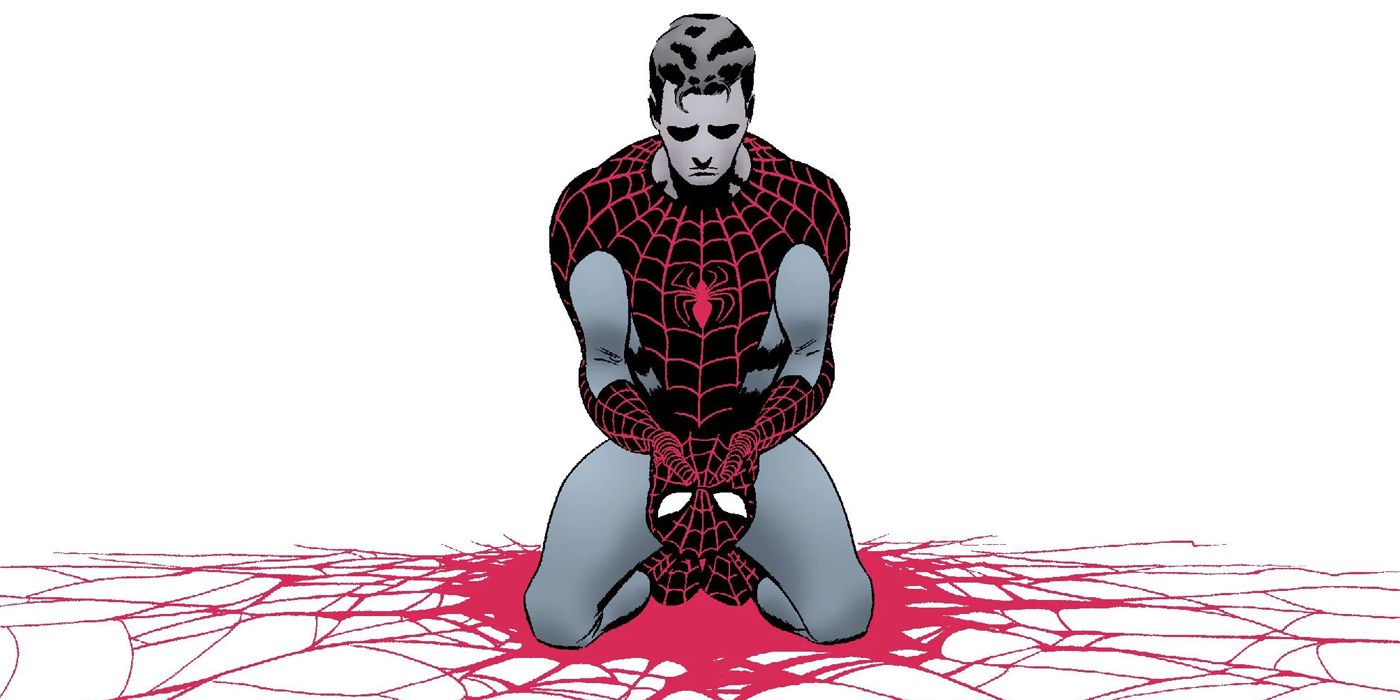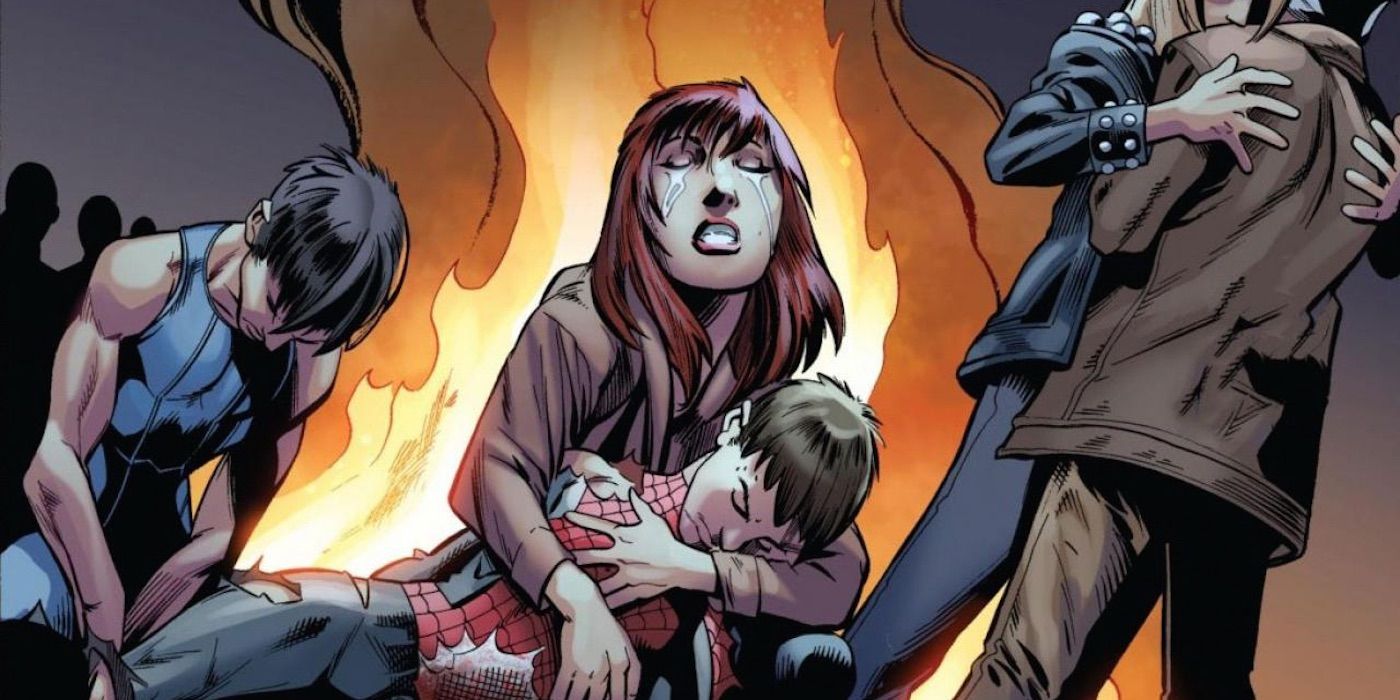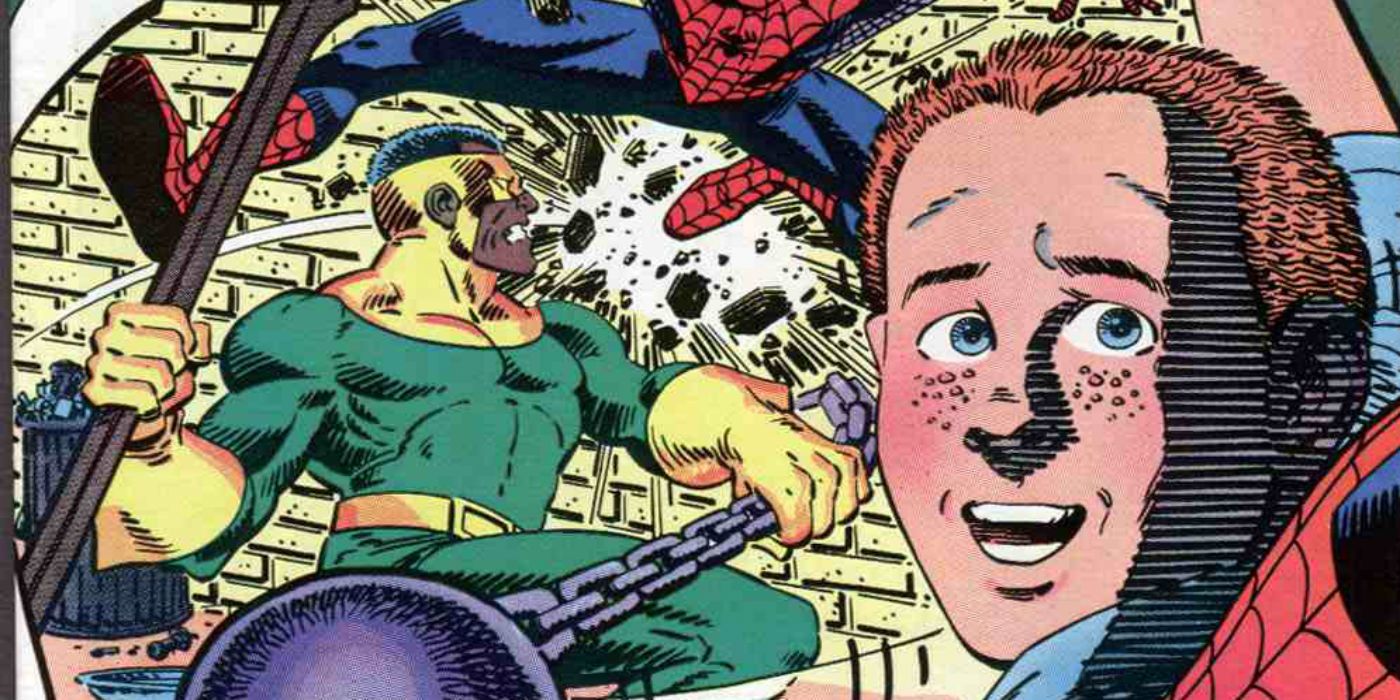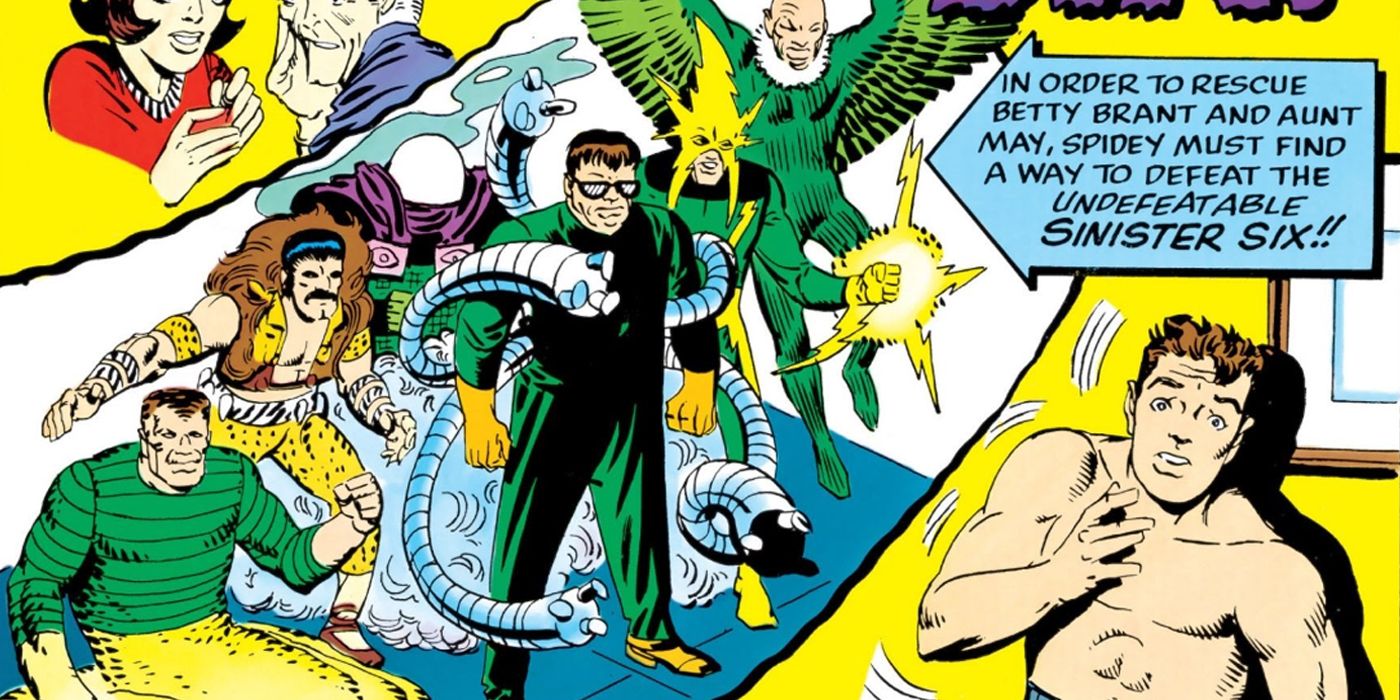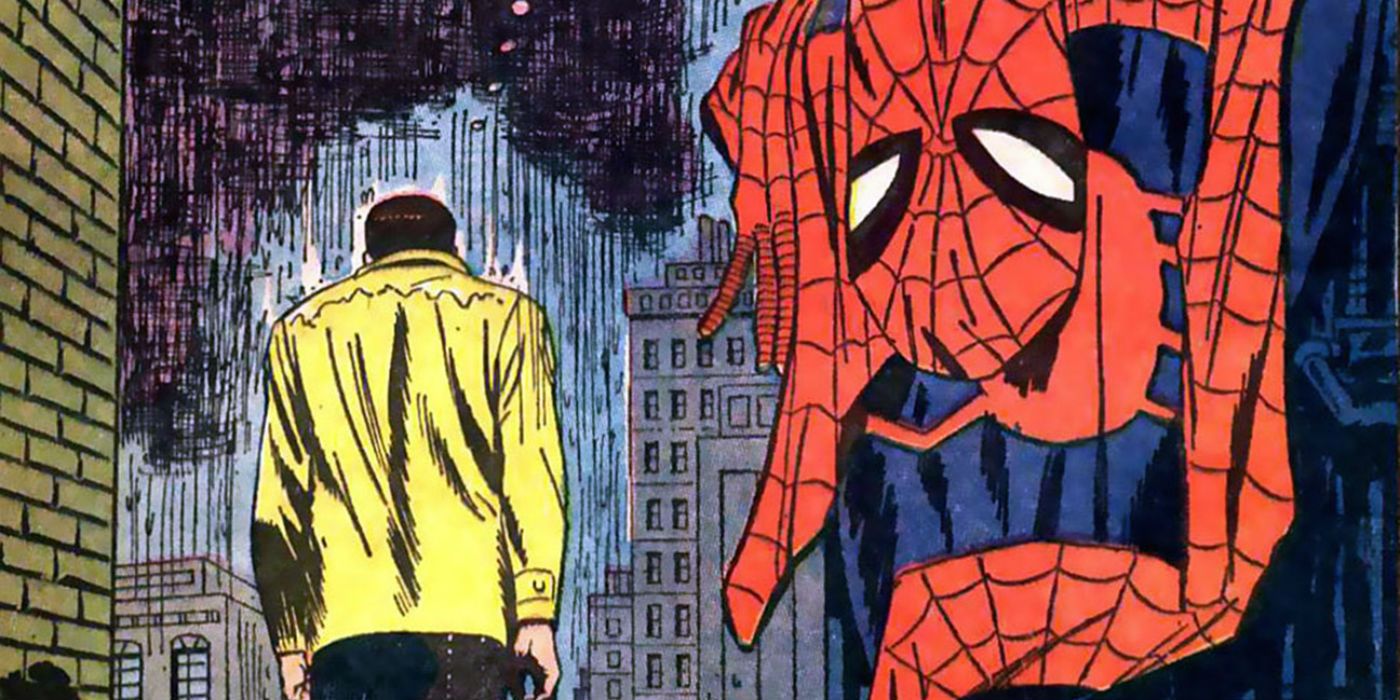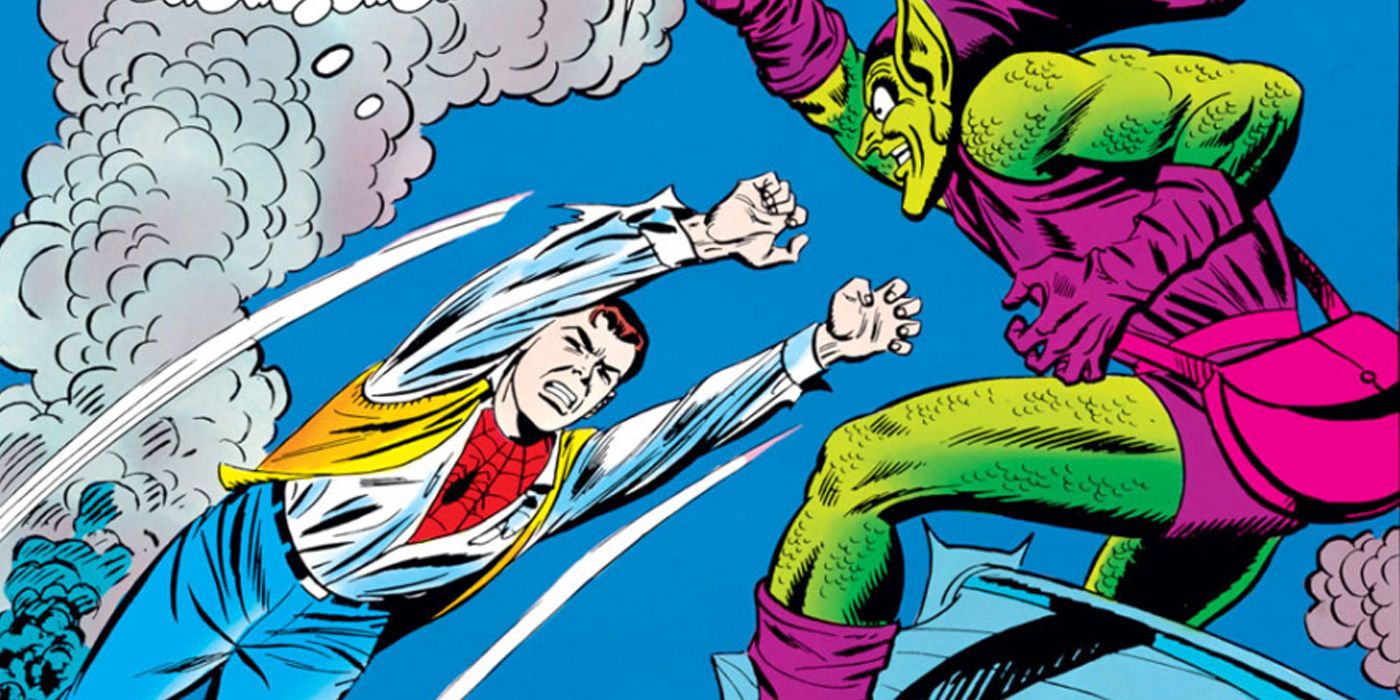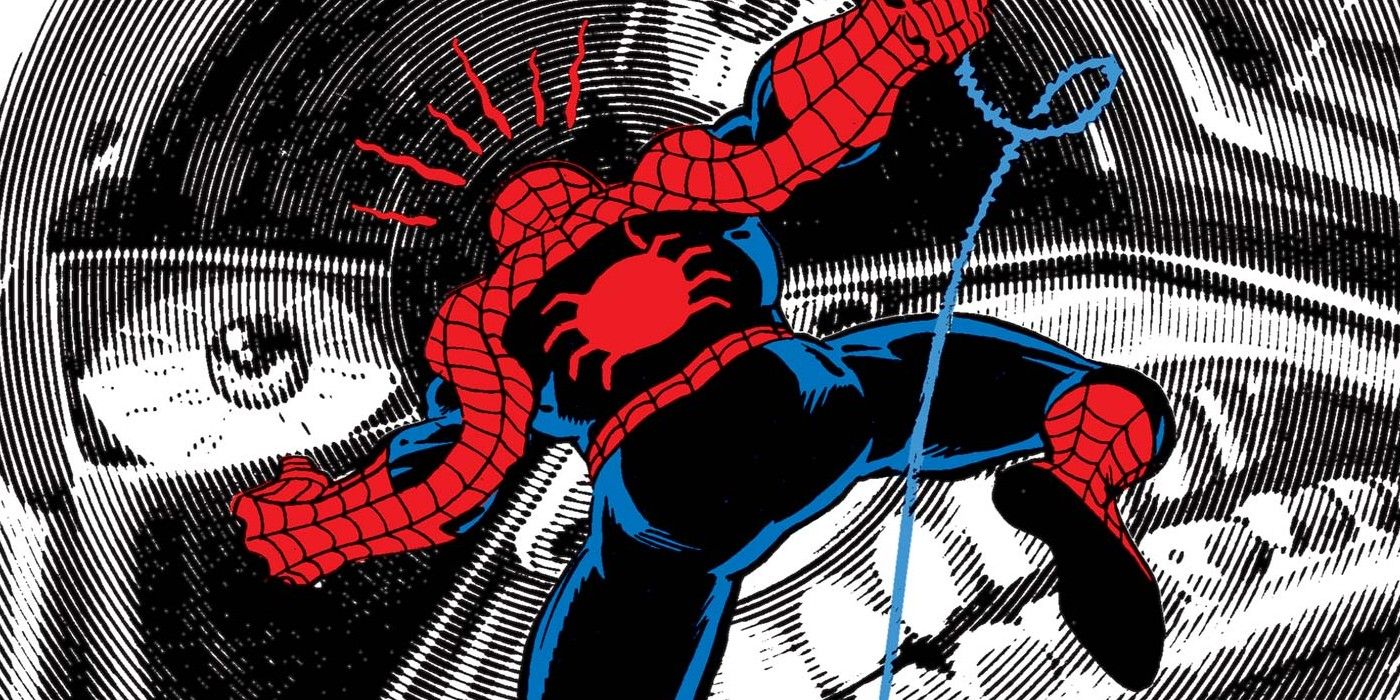Summary
- “Back in Black” stands as one of the grimmest moments in Peter Parker’s history, showcasing a vengeful Spider-Man on a mission to find the man responsible for Aunt May’s shooting.
- Marvel Knights: Spider-Man put its titular hero at the center of one of his most volatile adventures, incorporating iconic characters and maintaining a balance between the story’s bleakness and genuine humor.
- “Shed” is a truly disturbing comic that delves into Dr. Curt Connors’ transformation into the Lizard, resulting in one of Spider-Man’s greatest and heart-breaking failures.
Spider-Man is one of the most iconic figures in all of pop culture. Beloved by adults and children alike, Peter Parker’s status as both an everyman and one of Marvel’s greatest heroes has endeared the character to audiences worldwide. Spider-Man comics have played host to some of the greatest, most important stories in the history of the medium.
Able to seamlessly transition from bright, bubbly, child-friendly stories to dark, introspective, and mature ones, Spider-Man’s sheer versatility as a character plays a huge part in what’s kept the character fresh and relevant for so long. Of course, there have been hundreds of the best Spider-Man comics over his five decades of existence, but these are really the cream of the crop.
Updated on July 27, 2023, by Scoot Allan: The highly-anticipated 2023 sequel Spider-Man: Across the Spider-Verse excited fans with an adaptation of one of the best Spider-Man comics. It’s just one of many unforgettable comics that have captured the essence of the character while entertaining Spider-Man fans for decades.
25 “Back in Black”
Amazing Spider-Man #539-543
Writer J. Michael Straczynski dealt with the fallout from the earth-shattering events of Civil War in the “Back in Black” storyline. After Peter Parker publicly revealed his identity as Spider-Man, his greatest fear was realized as his Aunt May was shot by an assassin. Spider-Man dropped his usual happy-go-lucky attitude to beat his way through a list of names and find the man responsible.
- Creative Team: J. Michael Straczynski, Ron Garney, Bill Reinhold, VC’s Cory Petit, and Matt Milla
A bitter, vengeful Peter Parker returned to his iconic black suit after he was pushed to his limits. The story stands as one of the grimmest moments in Peter Parker’s history and the result is a disturbing, engrossing read. It may directly lead to the events of the widely criticized “One More Day” storyline, but that doesn’t stop “Back in Black” from being great on its own.
24 “Down Among The Dead Men/Venomous/The Last Stand”
Marvel Knights: Spider-Man #1-12
Mark Millar’s talent for balancing the inherent bleakness of his stories with genuine humor and likable characters was on display in his 12-issue run on Marvel Knights: Spider-Man. The story followed Spider-Man as he struggled to protect his family after an unknown villain learned his secret identity. He also faced almost every member of the Sinister Six in a powerful new roster.
- Creative Team: Mark Millar, Terry Dodson, Rachel Dodson, Ian Hannin, and Cory Petit
Marvel Knights: Spider-Man put its titular hero at the center of one of his most volatile adventures to date. Brought to life by Terry Dodson’s impressive artwork, Millar incorporated dozens of iconic characters from Spider-Man’s history. The book also takes particular care to make its characters fun and interesting, making several members of Spidey’s rogues’ gallery even more magnetic.
23 “The Hobgoblin Saga”
Amazing Spider-Man #238-239, #244-245 and #249-251; Peter Parker: The Spectacular Spider-Man #43, #47-48 and #85
A few characters have used the Hobgoblin identity over the years, though the villain’s initial debut created a lasting mystery about his identity. One of Spidey’s most intimidating villains was a mysterious criminal who stumbled upon the Green Goblin’s lair and appropriated his specialized gear and advanced tech.
- Creative Team: Roger Stern, Bill Mantlo, John Romita, Jr., John Romita, Sr., Mike Zeck, Al Milgrom, and more
Conceived by writer Roger Stern and legendary artist John Romita Jr, Hobgoblin remains one of the most imposing villains in Spider-Man’s ever-expanding cast of villains. “The Hobgoblin Saga” provided Marvel Comics with one of its most compelling mysteries to date that made the new character such a big success.
22 “Shed”
Amazing Spider-Man #630-633
One of the most truly disturbing Spider-Man comics, “Shed” has been praised by many and criticized by others for its brutal and controversial events. Focusing on Dr. Curt Connors/The Lizard, “Shed” finally sees Connors lose the war inside his own head as the Lizard portion of his brain finally takes full control.
- Creative Team: Zeb Wells, Chris Bachalo, Tim Townsend, Jaime Mendoza, Antonio Fabela, and Joe Caramagna
Embarking on a brutal rampage across the city, the Lizard targeted several sources of negativity in Connors’ life, including his helpless son Billy. Spider-Man failed to arrive on time to save Billy, and The Lizard devoured his own son, traumatizing Connors. It’s a tough comic to read and stands as one of Spider-Man’s greatest, most heart-breaking failures of all time.
21 Spider-Verse
Amazing Spider-Man #9-15, Edge of Spider-Verse #1-5, Spider-Verse #1-2, Superior Spider-Man #32-33, Spider-Verse Team-Up #1-3, Scarlet Spiders #1-3, Spider-Woman #1-4, and Spider-Man 2099 #5-8
Spider-Verse explored the Spider-Man mythos on a multiversal scale while featuring relatively few characters outside the world of Spider-Man. Bringing together the various incarnations of the webhead from across the multiverse, Spider-Verse featured the return of Morlun, one of the most terrifying villains Spidey has ever faced, as well as his family, the Inheritors.
- Creative Team: Dan Slott, Olivier Coipel, Humberto Ramos, Giuseppe Camuncoli, Christos N. Gage, Dave Williams, Jason Latour, Robbi Rodriguez, and more
The Inheritors’ mission is to consume the life force of every Spider Totem in the multiverse. Their vicious attack brought together heroes like Miles Morales, Superior Spider-Man, Spider-Gwen, Spider-Ham, Spider-Man 2099, Spider-Man Noir, Spider-Woman, and Silk just to name a few. The fan-favorite event inspired the Spider-Man: Across the Spider-Verse animated film series
20 “The Conversation”
Amazing Spider-Man #38 (February 2002)
J. Michael Straczynski’s “The Conversation” stands out as one of Peter Parker’s most touching stories. After being beaten half to death by Morlun during the events of “Coming Home,” Aunt May finally learned that her nephew was Spider-Man. The unforgettable issue focuses solely on the resulting conversation between Peter and his aunt after the shocking revelation.
- Creative Team: J. Michael Straczynski, John Romita Jr., Scott Hanna, Dan Kemp, Richard Starkings, and Wes Abbott
The pair commiserate over their mutual feelings of guilt over Uncle Ben’s death, with Aunt May revealing that an argument between them led to Ben leaving the house on the night of his murder. After so many years’ worth of secrets and stifled feelings between May and Peter, seeing them clear the air and open up to each other is both incredibly satisfying and unexpectedly touching.
19 Maximum Carnage
Spider-Man Unlimited #1-2; Web of Spider-Man #101-103; Amazing Spider-Man #378-380; Spider-Man #35-37; The Spectacular Spider-Man #201-203
1993’s “Maximum Carnage” remains one of the largest-scale events in Spider-Man’s history. A recently depowered Cletus Kasady escaped, becoming Carnage once again. Not content with wreaking havoc alone, Carnage also freed the equally deranged Shriek before initiating a merciless killing spree across New York with villains like Carrion, Doppelganger, and Demogoblin.
- Creative Team: J. M. DeMatteis, Terry Kavanagh, David Michelinie, Mark Bagley, Sal Buscema, Ron Lim, Tom Lyle, Alex Saviuk, and more
Spider-Man formed his own team with characters like Venom, Black Cat, Captain America, Iron Fist, Morbius, and even Cloak & Dagger. “Maximum Carnage” featured intense action, beautiful art, and playful character work. The series was so popular in the ’90s that a SNES video game was released the following year.
18 “The Gauntlet”
Amazing Spider-Man #612-629 and Web Of Spider-Man #2-5
Initially conceived as a slow build-up to the Kravinoff-centric “Grim Hunt” storyline, “The Gauntlet” ended up being just as compelling, if not more so. Pitting Spidey against a sudden resurgence of his greatest foes, “The Gauntlet” gave each villain their own separate story to shine, with gems like “Rage of the Rhino” and “Endangered Species” standing out as particularly great reads.
- Creative Team: Joe Kelly, Mark Waid, Karl Kesel, Dan Slott, Kurt Busiek, Fred Van Lente, Javier Pulido, Barry Kitson, Luke Ross, Paulo Siqueira, Paul Azaceta, Michael Lark, and more
Spider-Man took on iconic villains like the Rhino, Lizard, Mysterio, Sandman, Electro, Chameleon, Morbius, and Hammerhead one after the other. The endless onslaught of foes started to take a toll on Spider-Man which would later benefit the Kravinoffs. “The Gauntlet” was a darker take on classic Spider-Man stories that built a compelling overarching narrative.
17 “Best Of Enemies”
Spectacular Spider-Man #200 (May 1993)
The complex history between Harry Osborn and Peter Parker reached a dangerous new level in the “Best of Enemies” storyline. In previous issues, Harry Osborn took up the Green Goblin identity and quickly descended into madness like his father. He dedicated his life to tormenting Peter Parker, though a little piece of Harry was still reluctant to kill his former best friend.
- Creative Team: J.M. DeMatteis, Sal Buscema, Bob Sharen, and Joe Rosen
Harry dosed Peter with a hallucinogenic drug and trapped him in a building armed with explosives. Upon realizing that several people were still in the building, including MJ and his son Normie, Harry regains control of his mind and sacrifices himself to save everyone, including the drugged Spider-Man. “Best of Enemies” brought a heartbreaking end to a long-running storyline.
16 Spider-Island
Amazing Spider-Man #659-660, 662-673; Spider-Island: The Amazing Spider-Girl #1-3, Spider-Island: Avengers #1, Spider-Island: Cloak and Dagger #1-3, Spider-Island: Daily Bugle #1, Spider-Island: Deadly Foes #1, Spider-Island: Deadly Hands of Kung Fu #1-3, Spider-Island: Heroes for Hire #1, Spider-Island: I Love New York City #1, Spider-Island: Spider-Woman #1, Venom #6–8
Dan Slott’s “Spider-Island” followed the Jackal and the nefarious Spider Queen as they infected Manhattan with a virus that gave everyone spider-powers. This caused citywide chaos as the Avengers attempted to tackle the sudden swell in superpowered crime before everyone transformed into mutated spider-like monstrosities.
- Creative Team: Dan Slott, Humberto Ramos, Stefano Caselli, Rick Remender, Christos N. Gage, Michael Del Mundo, Paul Tobin, Pepe Larraz, Nick Spencer, Emma Rios, and more
Slott’s writing used the much-maligned aspects of Spider-Man’s history to his advantage, giving convoluted characters like Kaine their due in the event. Combined with awesome action sequences and energetic art by Humberto Ramos, “Spider-Island” remains one of the most memorable arcs in Dan Slott’s great run on The Amazing Spider-Man.
15 “Coming Home”
Amazing Spider-Man #30-35
J. Michael Straczynski’s “Coming Home” revealed that the spider responsible for biting Peter Parker did so intentionally. As a “Spider-Totem,” Spider-Man was a multidimensional entity connected to the Web of Life. A relentless energy vampire named Morlun feeds on Spider-Totems, which brings him into an encounter with Spider-Man to give the wall-crawler the fight of his life.
- Creative Team: J. Michael Straczynski, John Romita Jr., Scott Hanna, Dan Kemp, Avalon Studios, Richard Starkings, and Wes Abbott
“Coming Home” is one of the most grueling and hopeless chapters in Spider-Man’s career, with Peter eventually realizing that victory against Morlun is extremely unlikely. The storyline highlighted the determination, bravery, strength, and ingenuity of Spider-Man. “Coming Home” added legitimate stakes as the wall-crawler could genuinely perish in battle at any moment.
14 “Birth Of Venom”
Secret Wars #8; Amazing Spider-Man #252-259, #298-300 and #315-317; Fantastic Four #274; and Web of Spider-Man #1; Amazing Spider-Man Annual #10
One of Marvel’s greatest rivalries between Eddie Brock’s Venom and Spider-Man debuted in 1988’s The Amazing Spider-Man #300. A terrified Mary Jane revealed that a creature wearing Spider-Man’s black costume broke into their apartment, and Peter started to suspect that someone was following him.
- Creative Team: Jim Shooter, Mike Zeck, Tom DeFalco, Roger Stern, Ron Frenz, Louise Simonson, Greg LaRocque, David Michelinie, Todd McFarlane, and more
Peter’s stalker was none other than bitter ex-journalist Eddie Brock, who blamed Parker for his recent fall from grace. Bonded with the alien symbiote previously worn by Spider-Man, Eddie Brock became Venom to get revenge. Todd McFarlane’s jaw-dropping art gave the resulting battle weight and substance, kicking Venom’s comic book career off with a huge bang.
13 Spider-Man: Blue
Spider-Man: Blue #1-6
Writer Jeph Loeb and artist Tim Sale’s “Colors” series continued with Spider-Man: Blue, the crowning achievement of the series. The story takes a pensive look back at the iconic relationship between Peter Parker and Gwen Stacy before her untimely death at the hands of the Green Goblin.
- Creative Team: Jeph Loeb, Tim Sale, Steve Buccellato, Richard Starkings, and Wes Abbott
Taking place on Valentine’s Day, Spider-Man: Blue sees Peter dictate his thoughts about Gwen into a tape recorder as he revisited several key moments from their relationship as well his eventual marriage to MJ. The whole book is a bittersweet reflection on the two most important figures in Spider-Mans’s history and how they shaped his journey as a hero and a person.
12 “No One Dies”
Amazing Spider-Man #655-656
Spider-Man is a character who is all too familiar with death. From his Uncle Ben to Gwen Stacy and countless others in between, Peter Parker has dealt with death more than most other Marvel heroes. One such casualty was Marla Jameson, wife of J. Jonah Jameson, who died taking a bullet for her husband during B-list Spider-Man villain Alistair Smythe’s violent crusade.
- Creative Team: Dan Slott, Marcos Martín, Muntsa Vicente, and VC’s Joe Caramagna
Marla’s death tormented Spider-Man with nightmares of those he’s lost over the years, including haunting appearances from characters like Uncle Ben, Gwen Stacy, and Jean DeWolff. Peter’s mind is pushed through a nightmarish hellscape of guilt and sadness trying to process the countless deaths in his life before ultimately declaring that “no one dies.”
11 “Death Of Spider-Man”
Ultimate Spider-Man #153-160, Ultimate Avengers vs. New Ultimates #1-6, Ultimate Fallout #1-6
The famous “Death of Spider-Man” arc in Ultimate Spider-Man sparked worldwide interest and some outrage by even those outside of the comic book fandom. Even though the death happened outside of Marvel’s mainstream continuity, the idea that such a beloved character would meet his end was a bitter pill to swallow for some and made Peter’s eventual death even more powerful.
- Creative Team: Brian Michael Bendis, Mark Millar, Leinil Francis Yu, Mark Bagley, David Lafuente, Sara Pichelli, Chris Samnee
Peter Parker’s death was a real gut-punch moment since he died in the presence of MJ, Aunt May, Johnny Storm, and Gwen Stacy. However, it also gave the character an emotionally resonant and heartfelt send-off. Peter’s sacrifice would inspire young Miles Morales to take up the mantle, ushering in a whole new era with one of Marvel’s most popular new characters.
10 “The Kid Who Collects Spider-Man”
Amazing Spider-Man #248 (October 1983)
Although it’s not a typical Spider-Man adventure, “The Kid Who Collects Spider-Man” is one of the most widely loved entries in the webhead’s canon. Written by Roger Stern, it was initially created as a backup story. But “The Kid Who Collects Spider-Man” subsequently became much more popular than the issue’s main feature.
- Creative Team: Roger Stern, John Romita Jr., Brett Breeding, Bob Sharen, and Diana Albers
Spider-Man paid a visit to young Tim Harrison, one of his biggest fans. The two shared various anecdotes and stories, and Tim’s optimism and appreciation touched Spider-Man. Before leaving, Spider-Man revealed his identity and origin to Tim. Readers learned in the climax that Tim had a terminal illness in one of Marvel’s saddest but most heart-warming reads.
9 “The Sinister Six”
Amazing Spider-Man Annual #1 (June 1964)
Formed by a recently-escaped Doctor Octopus, the Sinister Six featured Spidey’s most fearsome foes, including Mysterio, Electro, Kraven the Hunter, Sandman, and Vulture. Uniting to kill Spider-Man, they kidnapped Betty Brant and Aunt May to draw him out. With each character hoping to deliver the fatal blow to the wall-crawler, they agreed to attack their foe one at a time.
- Creative Team: Stan Lee, Steve Ditko, and Sam Rosen
In an action-packed series of beautifully illustrated battles, Spider-Man faced each individual member of the Sinister Six. The introduction of the Sinister Six solidified Spider-Man as one of Marvel’s most formidable heroes, as he survived the seemingly endless gauntlet of villains through sheer determination and quick thinking.
8 “Spider-Man No More”
Amazing Spider-Man #50-52
“Spider-Man No More” is one of the most instantly recognizable issues of The Amazing Spider-Man ever created, with the image of Peter Parker walking away from his discarded Spider-Man suit etching itself deep into the public’s collective consciousness. “Spider-Man No More” sees worn-out Peter Parker finally give up the mantle of Spider-Man.
- Creative Team: Stan Lee, John Romita Sr., Mickey Demeo, and Sam Rosen
“Spider-Man No More” also introduced one of Marvel’s biggest villains, the Kingpin, who capitalized on Spidey’s absence by making moves to strengthen his criminal empire. Peter ultimately realized that he couldn’t give up being a hero and he resumed his superhero career. The storyline has since become so iconic that the plot was adapted for the big screen in 2004’s Spider-Man 2.
7 “How Green Was My Goblin!”
Amazing Spider-Man #39 (May 1966)
“How Green Was My Goblin” is an essential read for fans as it marks the occasion that Spider-Man’s greatest enemy finally learned his true identity and vice versa. Green Goblin’s devious plan to unmask Spider-Man succeeded after he dampened his spider-sense. Green Goblin followed the hero without triggering his spider-sense, eventually discovering his secret.
- Creative Team: Stan Lee, John Romita Sr., Mike Esposito, and Artie Simek
The Green Goblin proceeded to defeat Spider-Man before tying him up and unmasking himself as Norman Osborn, the father of Peter’s best friend Harry. This signified the start of the increasingly toxic relationship between Peter, Norman, and Harry. “How Green Was My Goblin!” is unquestionably one of the most vital chapters in the wall-crawler’s early years.
6 “Nothing Can Stop The Juggernaut!”
Amazing Spider-Man #229–230
After receiving a call from a concerned Madame Web, Spider-Man learned that the Juggernaut planned to kidnap her at the request of the villain Black Tom Cassidy. Granted a mystical force by the demon Cyttorak that rendered him completely unstoppable, Spider-Man couldn’t stop the Juggernaut by conventional means. He had to improvise to take down the rampaging villain.
- Creative Team: Roger Stern, John Romita Jr., Jim Mooney, Glynis Wein, and Joe Rosen
“Nothing Can Stop the Juggernaut” doesn’t exactly contain any monumental plot points, groundbreaking narrative choices, or mind-blowing revelations. However, the dialogue between Spider-Man and Juggernaut as they duked it out really shines thanks to Roger Stern’s great script, with John Romita Jr.’s kinetic artwork giving the book some highly entertaining fight scenes.
